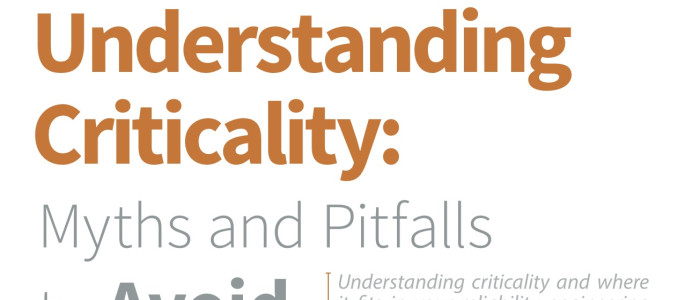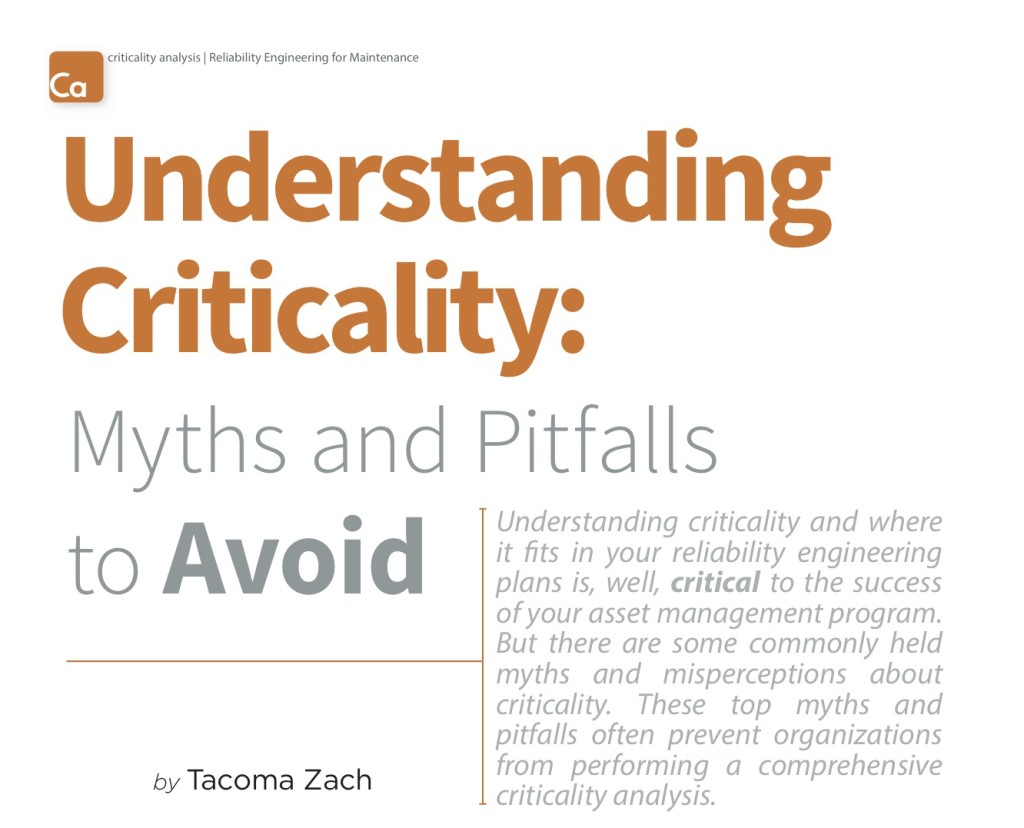Thanks to Uptime Magazine for publishing this article on the myths and pitfalls to look out for when doing a criticality analysis.
Simply, criticality refers to the relative importance of an asset or system to the mission of an organization.
Here are 7 myths and pitfalls to avoid in understanding criticality in your operation.
1. We know what’s most critical already, so we don’t need to do a criticality analysis.
This is probably the most common objection to conducting a criticality analysis. We often encounter operations personnel who are certain they ‘know what is critical’. This is mostly true (approximately 80% of the time). But, after some discussion we might discover that their criticality rankings are based on an older or skewed mission statement, which does not align with the current aim or mission.
Or, too often, we come across rankings that are really just numbers plucked out of the air, based on a good hunch. This finger in the wind approach leads to real-life examples like a kitchen appliance in the break room having the same criticality ranking as a key piece of process equipment in a refinery. Inevitably, through a proper criticality analysis we find something highly critical that has been overlooked, or resources being misdirected to non-critical assets.
It is also important to ask who in your facility “knows” what is critical. How is their knowledge being preserved? What happens if they leave or get hit by a bus? A criticality analysis will integrate, document and preserve vital institutional knowledge so that your organization is less people-dependent.
Are you relying on a hunch or assumption that your organization truly understands the criticality of your systems?
…
Download the full article Understanding Criticality: Myths and Pitfalls to Avoid or read the rest in the digital version of Uptime Magazine.



Comments are closed.